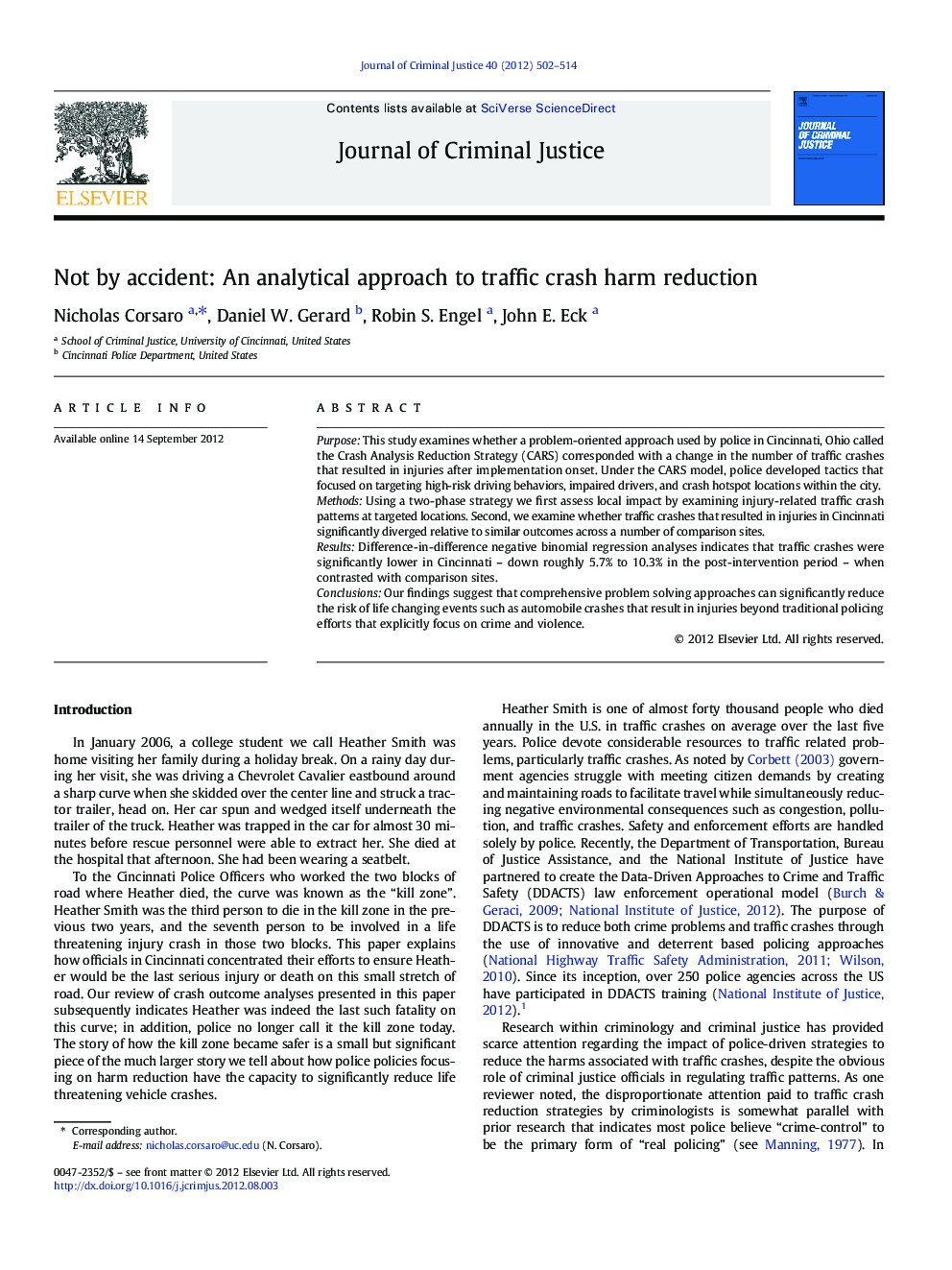| کد مقاله | کد نشریه | سال انتشار | مقاله انگلیسی | نسخه تمام متن |
|---|---|---|---|---|
| 882797 | 1471590 | 2012 | 13 صفحه PDF | دانلود رایگان |

PurposeThis study examines whether a problem-oriented approach used by police in Cincinnati, Ohio called the Crash Analysis Reduction Strategy (CARS) corresponded with a change in the number of traffic crashes that resulted in injuries after implementation onset. Under the CARS model, police developed tactics that focused on targeting high-risk driving behaviors, impaired drivers, and crash hotspot locations within the city.MethodsUsing a two-phase strategy we first assess local impact by examining injury-related traffic crash patterns at targeted locations. Second, we examine whether traffic crashes that resulted in injuries in Cincinnati significantly diverged relative to similar outcomes across a number of comparison sites.ResultsDifference-in-difference negative binomial regression analyses indicates that traffic crashes were significantly lower in Cincinnati – down roughly 5.7% to 10.3% in the post-intervention period – when contrasted with comparison sites.ConclusionsOur findings suggest that comprehensive problem solving approaches can significantly reduce the risk of life changing events such as automobile crashes that result in injuries beyond traditional policing efforts that explicitly focus on crime and violence.
► We examine the impact of a problem-oriented policing initiative in Cincinnati (OH).
► The intervention relied on several problem-solving police approaches.
► This strategy was designed to reduce traffic crashes in high-risk locations.
► Injury-related crashes in Cincinnati significantly declined at the time of intervention.
► The observed effect is retained when contrasted with comparison sites.
Journal: Journal of Criminal Justice - Volume 40, Issue 6, November–December 2012, Pages 502–514